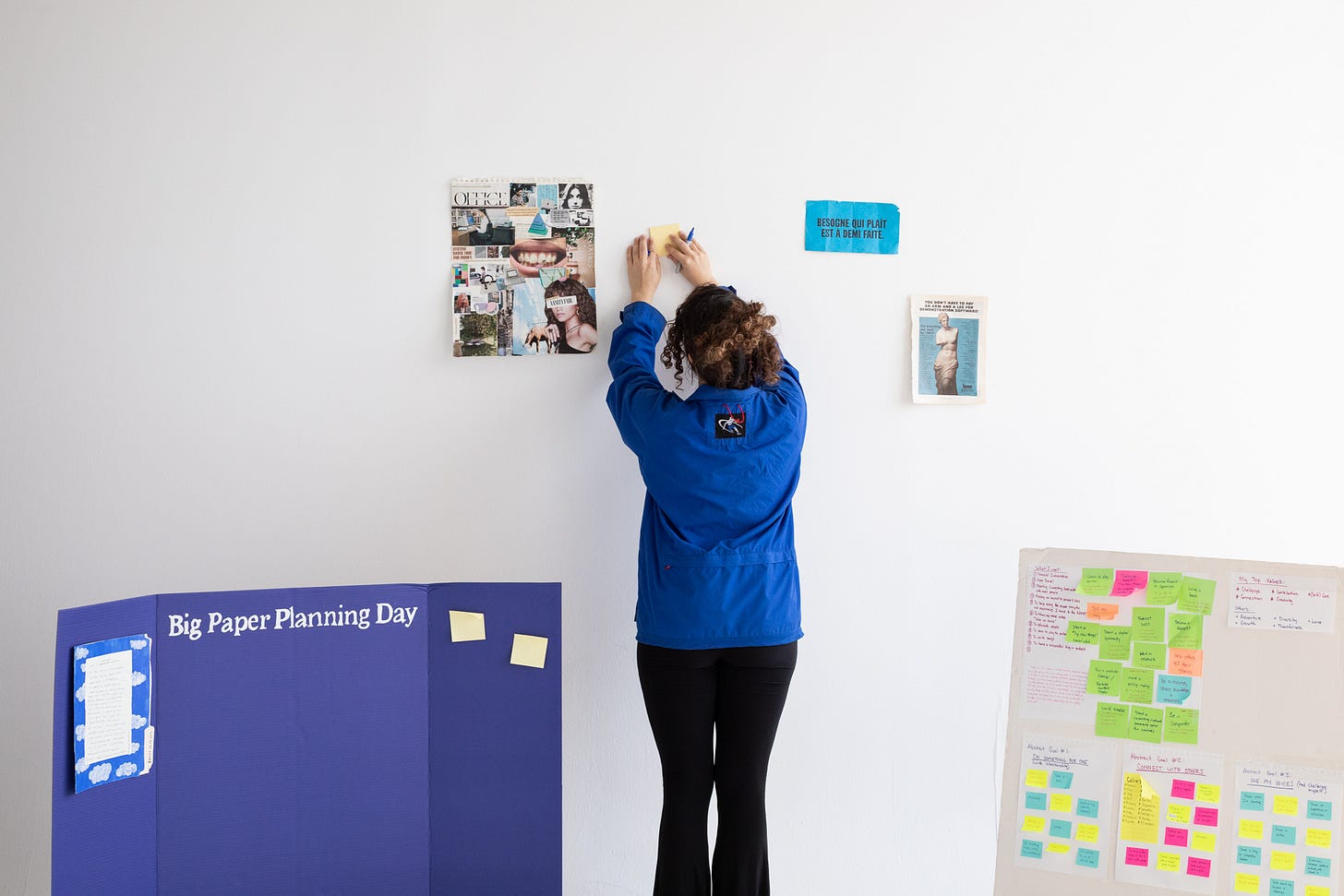How to actually start a creative business
You can throw spaghetti at the wall as long as you pay attention to the variables.
Right off the bat you have two options: You can either start with a problem that you have observed people experiencing, or you can start by asking yourself the question “What do I secretly want to do all day?”
Either way, this will give you context—a constraint. That’s good for creativity.
Anything you want to make or sell to other people needs to be good, so you’ll need to build some level of proficiency.
Practice.
If you want to make websites, make websites. If you want to do hair, do hair. If you want to code…you get it.
Get better at your thing so that you can confidently and ethically exchange it with other people for money.
Speaking of people, that’s the next part: You need to get really clear on who you are designing things for.
Nothing that sells well is for everybody. Not even Facebook started for everybody. Focus on a segment of a segment of an audience and learn everything you can about their experience on Earth.
This means talk to them. Interview them. Observe them. The more you listen and observe, the quicker you’ll stumble into an idea, a solution, an offering.
Make a prototype of that idea so that you can experiment with it. A prototype is not a full production with all of the bells and whistles. It’s a sketch, a model, an uncomplicated demonstration.
Take your prototype back to those people and collect feedback, not just testimonials. Ask them how you can do better.
If they say “No, I’m not interested, I wouldn’t spend money on this,” take notes. That’s data. Data informs every decision that you make, it’s how you make educated guesses about what might work.
Spoiler alert: It’s all an experiment, we’re all hypothesizing.
Remember that you’re not just getting feedback from them, you’re also getting feedback from yourself.
Check in. Is this pointing you in the direction of the life you actually want to live? If not, change the variables.
You can throw spaghetti at the wall as long as you pay attention to the variables and take note of what works and what doesn’t.
Once you feel confident in your prototype, iterate on it. Make it better.
Bring it back to those people again, and this time tell them more about why it matters. Do it on the Internet, do it in person, do it on the coffee shop bulletin board, I don’t care—but tell people what you’re doing, who it’s for, why it matters, how it works and how they can pay for it. That’s marketing.
It’s also self-advocacy, it’s how you get your needs met.
It’s vulnerable. Take care of yourself.
Your way doesn’t have to be someone else’s way. You can buy access to other people’s formulas but remember that they are theories, not laws.
Over time, you’ll get better at explaining the value of your offering or you’ll hire people like me who can help you put your tangled web of ideas into words.
Most importantly, listen to what people say.
Listen to how they describe their problem and the solutions they say they need. This is the best marketing, copywriting, design, business, leadership strategy you have.
If all else fails, go back to the lab and try it again.
If you’ve been thinking about joining The Study, now’s the time. We meet next week for a Q2 Sales Planning session where I’ll walk you through planning your launch and content calendar for the quarter ahead. See our full Spring syllabus and get all of the details about joining our little creative business sanctuary here.







